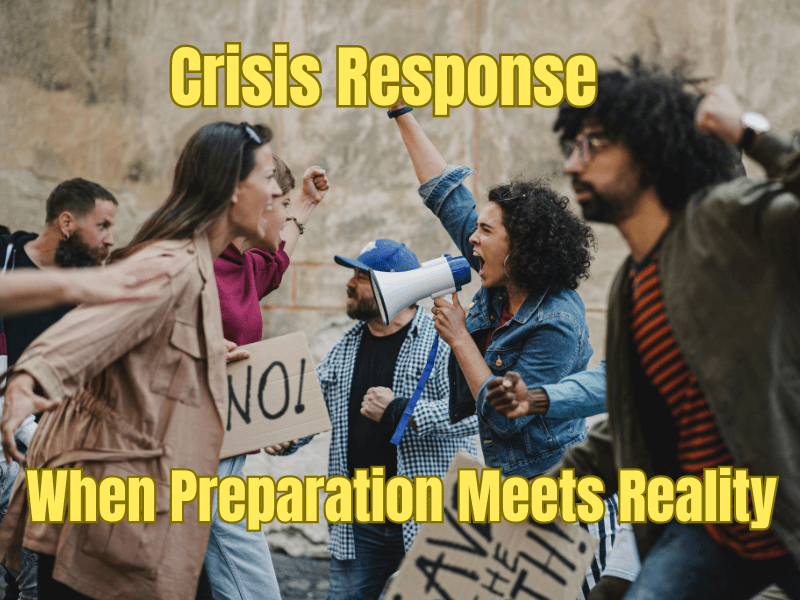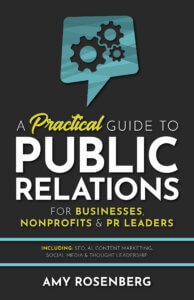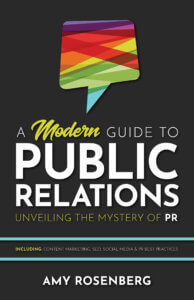Not every crisis comes with a warning. A social media post goes viral for the wrong reasons. A data breach goes unnoticed. A former employee goes public with a complaint. Now what?
Maybe you’ve done some prep work, but the situation you’re facing isn’t quite what you imagined. That’s okay. The structure you’ve built — response trees, aligned messaging, sample statements — can still help you respond. Whether or not you feel ready, there’s a path forward.
This post walks through how to respond when a crisis hits unexpectedly. If you haven’t read the first post in this series about proactive crisis communication planning, start there.
In this post, we shift focus to what to do when the news cycle is already spinning, your team is panicking and people are looking to you for answers.
While proactive planning is ideal, reactive communication is often unavoidable. And it doesn’t have to be messy.
Proactive vs. Reactive: What’s the Difference?
Proactive crisis communication is all about preparing in advance — mapping out scenarios, clarifying who says what and drafting statements before anything ever happens.
Reactive communication happens when the crisis is already unfolding. You have to respond fast and with clarity.
Even if the issue you’re facing isn’t what you expected, the groundwork you’ve laid can still guide you. And regardless of how much prep you’ve done, working within a clear protocol during the crisis will always help.
Here’s how to respond effectively when the pressure is on.
1. Avoid Saying “No Comment”
It may seem like the easiest response in a tough moment, but “no comment” is never a good look. It signals defensiveness, evasion or worse — guilt.
Instead, help your executives articulate something truthful and simple. You might say, “We’re still gathering information,” or “Our focus is on understanding what happened and supporting those affected.”
Your goal is to show humanity and presence, even if the facts aren’t all in yet. Every story has multiple perspectives. Don’t let yours be missing from the conversation.
2. Time Is Critical
A slow response in a fast news cycle is dangerous. If you wait too long, others will fill in the gaps — often with speculation.
That doesn’t mean you need a perfectly crafted statement right away. But it does mean you need something that signals awareness, accountability and a path forward.
Start with a short holding statement, then build from there as facts emerge. Clarity and speed matter more than polish in these first moments.
3. Always Be Truthful
Even in the middle of chaos, the truth still matters. Now more than ever.
You might not have all the answers, but that doesn’t mean you get to spin the story. Take on the role of internal investigator. What really happened? Who was affected? What steps are already being taken?
Distorting the truth or omitting key facts will only erode trust and escalate the situation. You can be brief and careful without being dishonest.
4. Consider All Audiences
In a crisis, it’s tempting to focus only on external media. But your internal audiences often matter more.
Employees, board members, customers and vendors need to hear from you too. They shouldn’t find out what’s going on from Twitter or the evening news.
Think through who needs to know what, and when. You might release information in a staggered timeline or communicate simultaneously across all fronts. Either way, show the people closest to your organization that they matter.
5. Bring in an Expert (But Don’t Delay)
Some crises are too big to handle alone. If legal exposure is involved or if lives or livelihoods are at stake, you should consult a crisis communication or legal expert.
But don’t let that consultation delay your initial response. You can still share a holding statement or express concern while the experts get briefed. Waiting for them to finish other projects or finalize every line can cost you valuable time and credibility.
Make your move while they’re getting up to speed.
6. Know When to Walk Away
Not every relationship is worth preserving.
If you’re caught in a crisis because of a dishonest vendor, evasive team member or problematic client, it may be time to part ways. Even if you don’t have hard proof yet, your instincts matter.
Disengaging can feel like a financial setback, but protecting your reputation and your peace of mind is almost always the better long-term move.
And remember, integrity isn’t just a talking point. It’s a strategy.
Ethics in Everyday Work: The Crisis Prevention Strategy
Moments of crisis don’t always start with fireworks. They usually start with the small stuff.
That offhand comment that didn’t feel right. The decision to skip a source check. The pressure to spin a stat instead of reporting it accurately.
Ethical missteps don’t just threaten your brand’s image — they weaken your ability to lead in a crisis. If your team knows that accuracy, transparency and ethics are part of your everyday work, it’s much easier to rally around the right approach when something goes wrong.
So yes, these principles matter when the heat is on. But they also matter when you’re drafting a regular blog post, giving a routine interview or choosing how to frame a stat in a sales deck.
Ethics aren’t a reaction. They’re a foundation.
Reactive Doesn’t Have to Mean Chaotic
Let’s be honest: you can’t always be ready. But you can always respond with care, clarity and speed.
The six steps outlined above give you a framework to move through a reactive crisis with your credibility intact — and your values visible.
This post is part of a two-part series on crisis communication. If you’re looking for advice on how to prepare in advance — by creating sample statements, response trees and more — start with this post on proactive crisis communication. Then come back here to learn what to do when the crisis actually hits.
Want more practical tools like this?
You’ll find more in my book, A Practical Guide to Public Relations for Nonprofits, Businesses and PR Leaders.
**Please note that Veracity does not accept clients that are currently under active crisis. We only work with clients that are planning ahead for a change that could unfold into a crisis, such as a sale, management transition or legislation. If a retainer client experiences an unplanned crisis, we are already a member of the team and ready to stand in their corner.**









